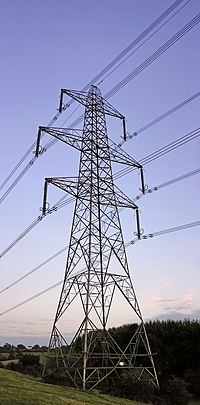
Photo from wikipedia
Abstract Inspired by nature, nanocarbon black (nCB) was diffused into swollen polydimethylsiloxane (PDMS) to obtain flexible conductive composites, forming a gradient distribution morphology. The nCB was enriched in the surface… Click to show full abstract
Abstract Inspired by nature, nanocarbon black (nCB) was diffused into swollen polydimethylsiloxane (PDMS) to obtain flexible conductive composites, forming a gradient distribution morphology. The nCB was enriched in the surface layers and its loading decreased in the inner region and the distribution process was theoretically calculated. The mechanical properties of PDMS/nCB composites were close to those of pure PDMS due to the gradient nCB distribution, and the surface of PDMS/nCB presented super-hydrophobicity resulted from the rough surface, even under strains. The composite started to be conductive at only 0.8 wt% nCB and it could work at a strain of 355% and had gauge factor of 343 with 6.2 wt% CB loading. The resistance of the composites against strain was explained theoretically using models based on the constriction and tunneling effects. These results indicate that composites with gradient filler distribution are excellent candidates for use as flexible strain sensors with high performance.
Journal Title: Composites Science and Technology
Year Published: 2020
Link to full text (if available)
Share on Social Media: Sign Up to like & get
recommendations!